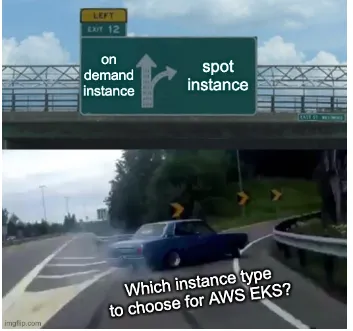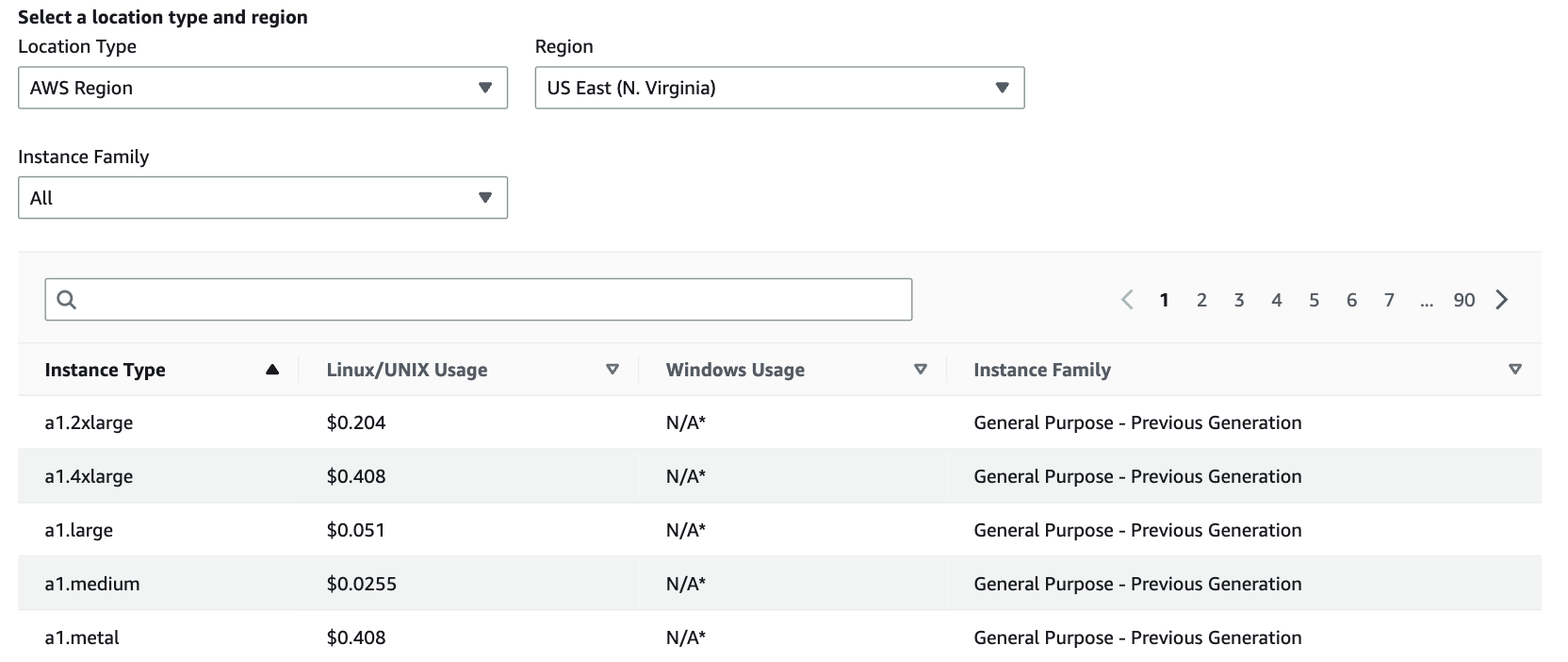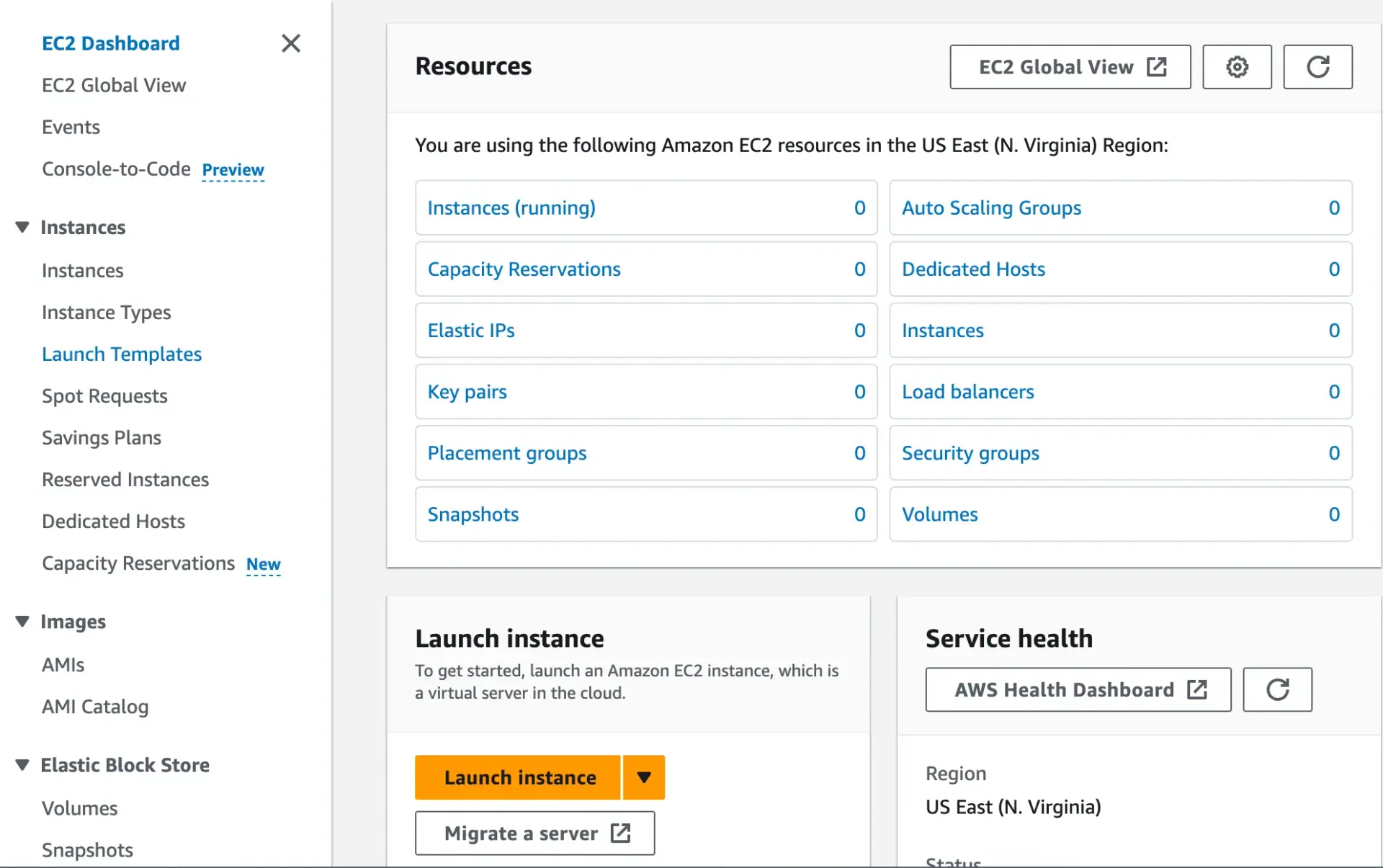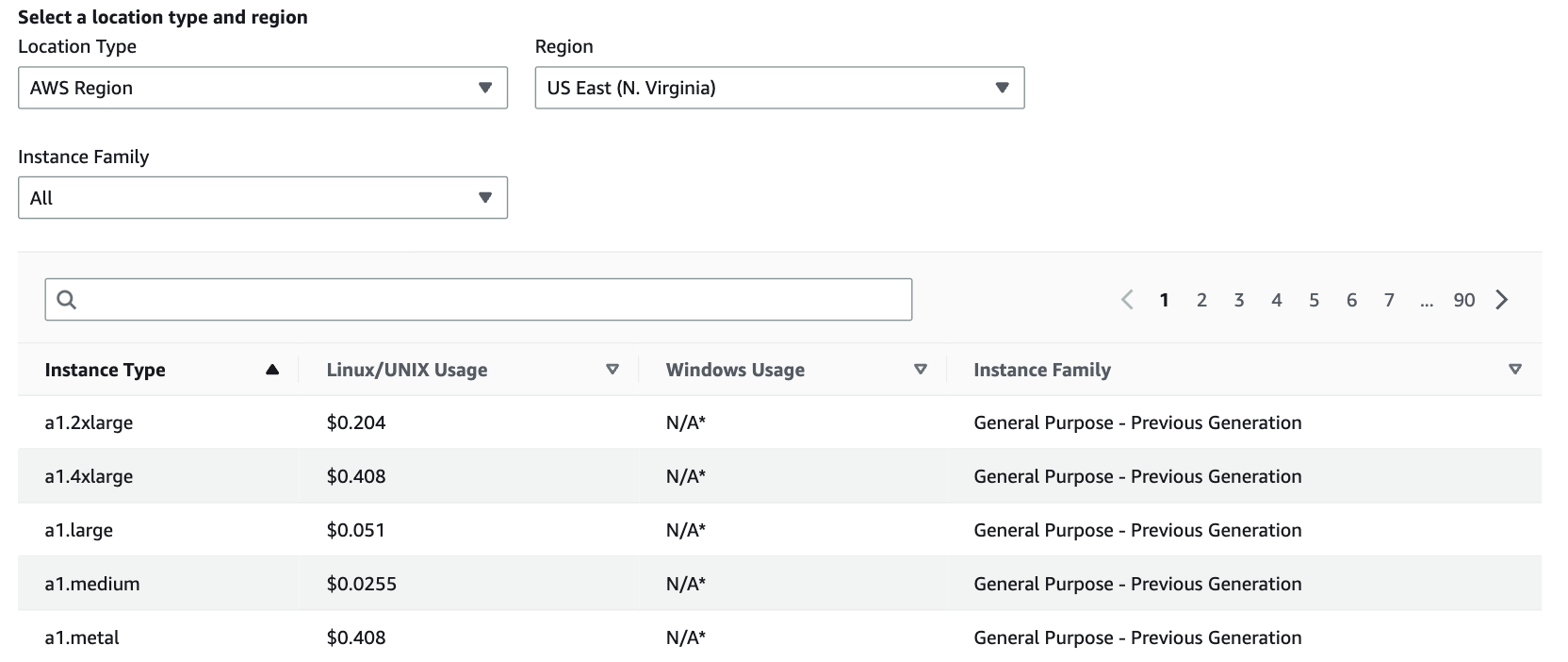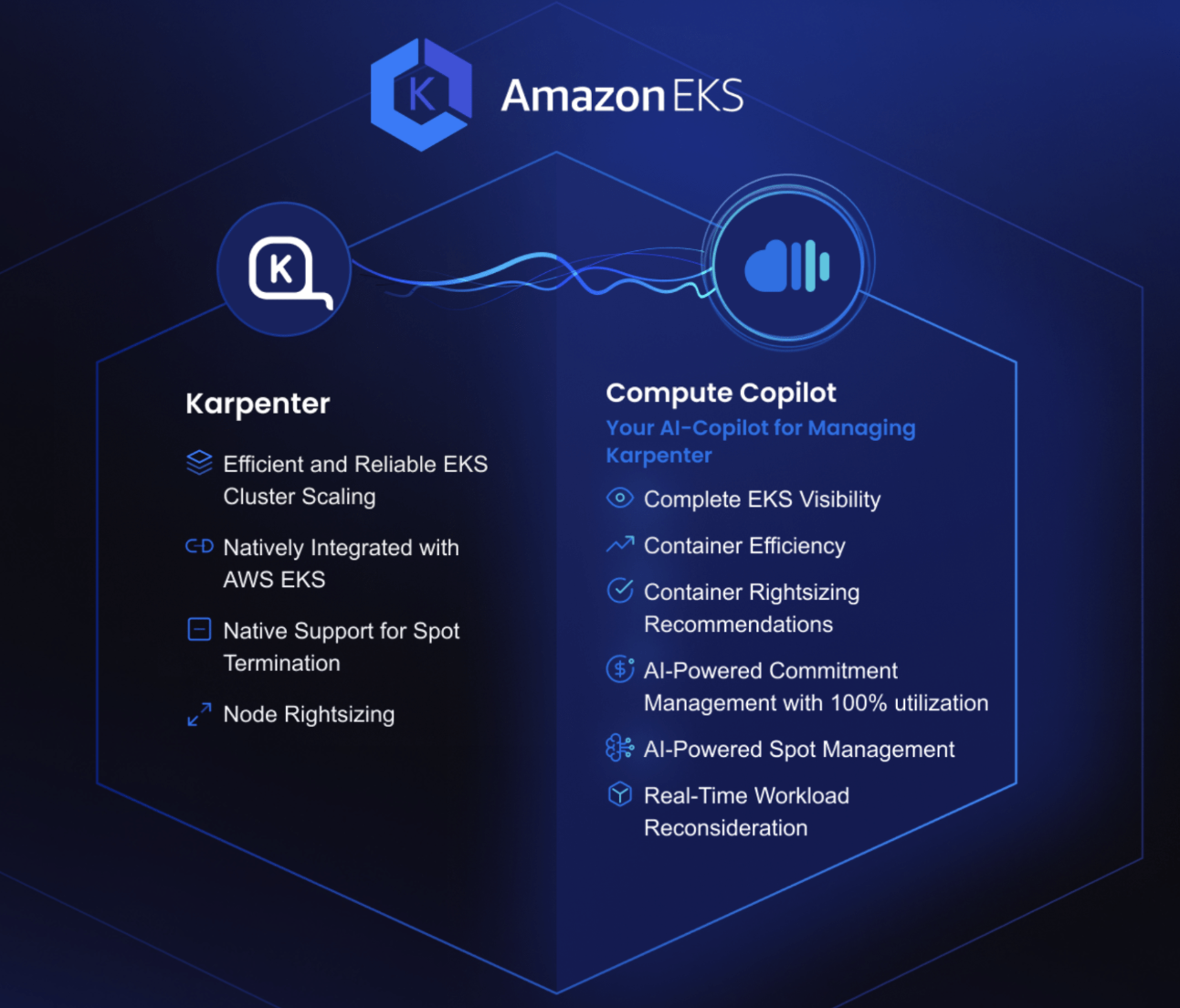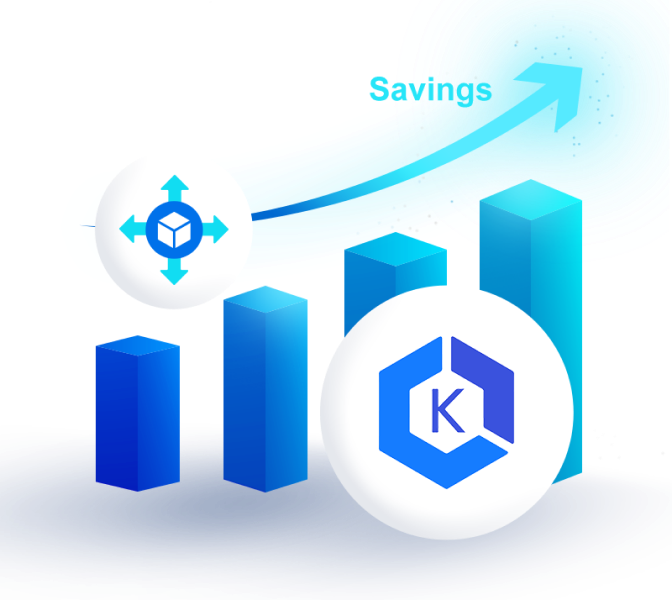AWS EC2 Spot Instance Pricing Guide
Spot Instance pricing is the cheapest pricing model on AWS (Amazon Web Services), compared to other models like On-Demand, Reserved Instances, and Savings Plans. That means that when it comes to cutting EC2 costs, Spot Instances are the single most powerful lever — offering up to 90% off On-Demand pricing. However, unlike instances from other pricing models, Spot is more volatile and subject to interruptions with just a 2-minute warning.
In this post, we’ll break down the basics of Spot pricing, how it works, and what to watch out for before you make the switch.
What are AWS EC2 Spot Instances?
Spot Instances are a purchasing option for Amazon EC2 that lets you tap into AWS’s unused compute capacity at steep discounts. AWS continuously monitors demand across its infrastructure, and when extra capacity becomes available, it offers that capacity at lower prices via Spot. You’re essentially renting spare servers at a discount — with the tradeoff that AWS can reclaim them at any time if demand comes back.
When to Use Amazon EC2 Spot Instances?
Spot is best suited for flexible, fault-tolerant workloads that can handle interruptions without data loss or major disruption. Examples include:
- Machine Learning: Training models can take hours or even days, but they’re resilient to restarts — especially with checkpointing. Spot lets you run high-cost GPU or CPU jobs at a fraction of the price. It’s one of the easiest ways to scale experimentation without scaling cost.
- CI/CD Operations: Build and test jobs don’t need to run on expensive, always-on compute. They’re short-lived, stateless, and easy to retry, which makes them ideal for interruption-prone Spot capacity. You can also scale your pipelines massively without inflating your bill.
- Stateless Applications: Apps that don’t store session data locally — like containerized services behind a load balancer — can recover quickly when a Spot instance is reclaimed. That means you get elasticity and savings, without risking user experience.
- Big Data: Spot is perfect for parallel data processing tasks like Spark or Hadoop, where losing a few nodes doesn’t kill the job. You can run massive clusters at a steep discount, speeding up time-to-insight without overspending on compute.
- Distributed Databases: While core nodes may need stable capacity, non-critical nodes — like read replicas or cache layers — can run on Spot. This gives you scalability and cost-efficiency without compromising durability or performance.
Spot is more difficult to use with tightly coupled, stateful workloads or anything that can’t tolerate sudden interruptions — unless you invest in extra engineering to make them fault-tolerant.
How AWS Spot Pricing Works
AWS Spot prices are determined by real-time supply and demand for unused EC2 capacity in each instance type, region, and Availability Zone. When AWS has excess compute resources, Spot prices drop. When demand for those resources increases, prices rise.
- No Customer Bidding:
In the past, AWS Spot pricing was based on customer bids. Now, AWS sets the Spot price algorithmically. You simply pay the current Spot price, which changes as AWS’s available capacity fluctuates. - Per-Instance-Type, Per-Zone:
Each instance type (e.g.,m6g.large,c5.xlarge) in each Availability Zone (us-east-1a,us-east-1b, etc.) has its own independent Spot price, updated as supply and demand change. - How You Are Charged:
When your Spot Instance is running, you pay the Spot price that’s in effect at the start of each instance-hour (or partial hour). If the price changes during the hour, you still pay the price from when the hour started. You never pay more than On-Demand price for any instance.
Here’s a quick example of Spot pricing. Let’s say you want to run a c6a.large instance in us-east-1:
- On-Demand price: ~$0.077 per hour
- Spot price: ~$0.018–$0.025 per hour (varies by AZ)
- Savings: ~67–76% off
How to Check Amazon EC2 Spot Instance Pricing
You can check current and historical Amazon EC2 Spot Instance prices in several ways, both publicly and within your AWS account.
1. AWS EC2 Spot Pricing Page (Public Access)
- Visit the Amazon EC2 Spot Instances Pricing page.
- Select your desired AWS region.
- View a table displaying the lowest current Spot price for each instance type in that region (updated every 5 minutes).
- This page is accessible without logging in and is useful for quick price checks and comparisons.
2. AWS Management Console
- Log in to the AWS Management Console.
- Go to the EC2 Dashboard.
- In the navigation pane, select Spot Requests.
- Click on Pricing history in the upper menu.
- Filter by instance type, operating system, and Availability Zone to see a graph of Spot price trends for the last 90 days.
- You can hover over the chart to view specific prices at different times.
3. EC2 Launch Instance Wizard
- When launching an instance via the EC2 Launch Wizard, choose the Request Spot Instances option.
- In Step 3 (Configure Instance), you’ll see the current Spot price for your selected instance type and Availability Zone.
4. AWS CLI
- Use the following command to get the latest Spot prices for a specific instance type and region:
bashaws ec2 describe-spot-price-history --instance-types c5.large --start-time=$(date +%Y-%m-%dT%H:%M:%S) --product-descriptions "Linux/UNIX" - This command returns current Spot prices for all Availability Zones in the specified region.
5. Spot Instance Advisor
- From the Spot Pricing page, you can access the Spot Instance Advisor.
- This tool lets you enter your requirements (CPU, memory) and see a list of instance types with current Spot prices, percent savings vs. On-Demand, and frequency of interruption.
Benefits of Using AWS Spot Instances
AWS Spot Instances can cut high costs from your cloud spending while still yielding optimal performance. Here are the benefits of Spot fleets.
Cost Savings
You can run fault-tolerant workloads on AWS Spot Instances for up to 90% off compared with the On-Demand price. Such cost savings arise because of unused cloud capacity subject to interruptions. You can run Spot fleets on the latest generation of AWS servers.
Compute-optimized servers, for example, lets you run High-Performance Computing (HPC) workloads at huge discounts. Even if you previously chose a long-term commitment, AWS lets users combine Spot capacity with Reserved Instances to yield savings that are even more significant. You can deploy Spot capacity at any time without significantly exceeding your cloud budget.
The Ultimate Guide to AWS Commitments
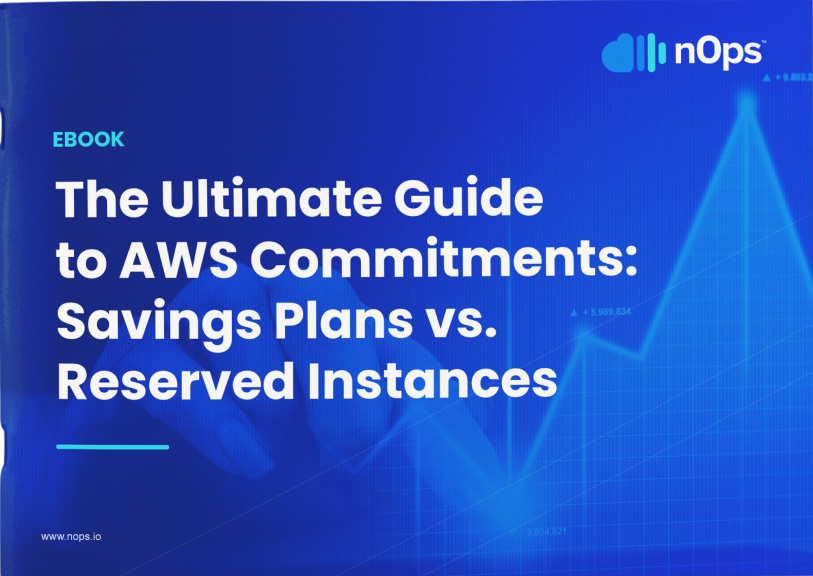
Auto-Scale
Autoscaling features help allocate the correct quantity of resources for running your workloads. If you under-allocate resources, chances are, you may increase the load. In such cases, you can deploy Spot fleets to serve workloads when needed.
With auto-scale, you can guarantee reliability and availability of resources; this reduces auto-termination of processes. AWS lets you define conditions and set maximum prices for terminating Spot capacity. As a result, AWS will run Spot fleets as long as the price remains below your bid price.
Flexibility And Control
The ‘Hibernate’ feature gives you the flexibility you need to maintain consistency in running your workloads. Instead of terminating the Spot Instance, AWS can pause the Spot Instance whenever there’s an interruption. When the Spot price goes below the bid price, AWS automatically resumes the Spot Instance.
There’s no need for manual launching and configuration. Users can also use the RunInstances API to access On-demand Instances. This API (application programming interface) lets you access secure, reliable, and high-performance compute capacity with one additional parameter.
Easy To Manage
AWS users can use real-time monitoring to track the deployment of Spot Instances. In addition, the ‘set your own price” feature eliminates any hidden costs when running Spot fleets. You’ll never pay more than the manually allocated price. AWS uses termination notices to send alerts two minutes before terminating a Spot Instance. The AWS alerts let you backup, save logs, and preserve the existing state before terminating your workloads.
For persistent workloads that don’t need interruptions, you can configure an AWS Elastic Block Storage with the Spot Instance such that AWS launches the instance only when prices are favorable.
Supports Integrations
Spot Instances have enough compute capacity, memory, and storage to handle most workloads. Special use cases, however, need various integrations. You can use several AWS services and microservices through Spot Instance integrations:
- Use the Elastic MapReduce Integration to reduce the processing costs of big data
- Use Amazon CloudFormation for deploying several AWS services and their dependencies
- Use Amazon Elastic Container service to run highly optimized workloads at fewer costs
- Use batch integration to run batch-processing jobs
- Use the ThinkBox Deadline integration to launch third-party products like Autodesk’s AutoCAD, Maya, 3dsMax, and much more
How to Update AWS Costs with Amazon EC2 Spot Instances
1. Use Intelligent Spot Instance Automation
Manual Spot orchestration can be extremely complicated as well as time-consuming. Automated Spot orchestration tools can help automate instance selection, lifecycle management, and graceful drain handling — so you get the savings with much less impact on reliability and operational overhead.
2. Diversify Instance Types and Availability Zones
Spot capacity varies across instance types and AZs. By configuring a broad and flexible capacity pool, you increase the likelihood of finding stable, low-cost Spot capacity — and reduce the risk of interruption. With a proper diversification strategy, you can reduce the risk of interruption to <1%.
3. Automatically Replace Interrupted Spot Instances
Spot interruptions are inevitable. Use a system that can detect instance reclamation events and automatically replace them with the next-best option from your diversified pool.
4. Integrate with Cluster Autoscaler or Karpenter
Leverage autoscalers that support Spot awareness. Karpenter in particular can provision capacity based on real-time pricing and availability, allowing you to maximize Spot usage dynamically.
5. Monitor and Adapt to Spot Trends
Spot pricing and interruption rates change over time. Use historical interruption data and capacity heatmaps to inform your provisioning strategy and avoid high-risk instance types.
|
nOps is an Amazon EC2 Spot Ready Partner. The Amazon EC2 Spot Ready Partner Program is designed to help AWS customers find AWS Partners to help them save with Spot. This program emphasizes solutions that are not only technically validated by AWS solution architects, but also optimized for cost-efficiency and ready for seamless integration with AWS services. |
Frequently Asked Questions (FAQ)
How much cheaper are AWS Spot Instances?
Spot Instances are typically 70–90% cheaper than On-Demand pricing, depending on region, instance type, and current market demand. For example, an m4.xlarge in us-west-2 may cost $0.024/hr on Spot versus $0.1/hr On-Demand. Discounts fluctuate constantly based on available capacity, so actual savings vary. While massive discounts are possible, the tradeoff is preemption risk if AWS reclaims the capacity.
How much is m4 xlarge spot pricing?
AWS EC2 Spot pricing for m4.xlarge varies by region and demand, but typically ranges between $0.02 and $0.03 per hour. For comparison, On-Demand pricing for m4.xlarge is usually around $0.10 per hour, which means Spot can deliver a 70–80% discount. The actual price fluctuates based on AWS capacity availability and bidding trends, so it’s important to monitor Spot pricing in real time. AWS provides tools like Spot Price History and Spot Instance Advisor, but automated platforms like nOps can automaticaly choose the most cost-effective instance for you and help ensure you’re always using the most cost-effective instance type.
Are Spot Instances worth it?
Absolutely, Spot instances are worth it, if you can manage them properly. Spot Instances can slash compute costs by 70–90%, but they come with the risk of sudden termination. That’s where nOps makes Spot practical: our platform uses historical data and ML to predict Spot interruptions up to 60 minutes in advance—far beyond AWS’s 2-minute warning—and automatically shifts workloads to safer instance types. You get the savings without sacrificing uptime. For many engineering teams, this means they can run production workloads on Spot, hands-free, with enterprise-grade reliability and no manual babysitting.
What are the disadvantages of Spot Instances?
The primary drawback is the lack of guarantees: AWS can terminate Spot Instances at any time, with just two minutes’ notice. This unpredictability makes Spot unsuitable for stateful or long-running workloads unless you have built-in automation, checkpointing, or failover. Availability is also inconsistent—certain instance types or AZs may not have Spot capacity when you need it. Reliability varies widely by region and instance family. Without tools to predict interruptions or rebalance workloads, engineering teams can face downtime and instability. For consistent performance, Spot needs smart orchestration or it becomes more hassle than it’s worth.



